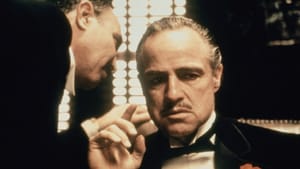Stay in the Loop
BSR publishes on a weekly schedule, with an email newsletter every Wednesday and Thursday morning. There’s no paywall, and subscribing is always free.
The genius of Marlon Brando
'Listen to Me Marlon' directed by Stevan Riley

In the 1990s I sent Marlon Brando a copy of a book I’d written, which detailed the rigorous teachings and theatrical personality of America’s preeminent teacher of acting, Stella Adler. Both Brando and I had the good fortune to study with Stella, though not in the same era. It was Adler who recommended Brando for the role of Stanley Kowalski in Streetcar on Broadway — and there the revolution began.
In my book, Acting with Adler, I told the story of how, though Marlon revered Stella, he wouldn’t allow her to come backstage after she’d observed a dress rehearsal of Streetcar. He wasn’t happy with his work. But then, when Stella attended opening night, the whole performance had changed. Brando had found the “lazy mouth” that epitomized Stanley, and in discovering the key to Stanley he had, she said, “just taken the whole play and put it in his pocket.” (By the way, I’m unable to say if Brando remembered Stella’s Streetcar story as it was told in my book. If he received the book, I didn’t hear.)
In the new documentary Listen to Me Marlon, if we didn’t know it already, we are convinced of the genius of Marlon Brando and the significance of his artistic contribution. We understand that Brando not only revolutionized acting, but also created a style of emotional authenticity that actors have esteemed ever since.
The film is built upon a treasury of audiotapes Brando made late in life, in his own words and his own voice. We hear him reflecting honestly, unpretentiously, and insightfully on his childhood with difficult parents and on the course of his complicated life as a nonconforming actor in the Hollywood system.
We see scenes from his films, reminding us of the extraordinary variety of roles he played. We see footage from the few television interviews he gave, reminding us of his intelligence and playfulness. We see newsreel coverage, reminding us of his generous ongoing activism on behalf of civil rights, black power, and Native American sovereignty. Then, intermittently, we hear him practicing mind-relaxation to access memory, settle his thoughts, and find clarity — and with this we discover a hidden aspect of Brando, the psycho-spiritual.
Facing the suffering
A tender touchstone of the film is Brando facing the suffering in his life. His parents were alcoholics, his son a murderer, his daughter a suicide victim; he himself was a Hollywood has-been or outcast. We hear him reciting Shakespeare’s sonnet, “When, in disgrace with Fortune and men’s eyes.” We hear him saying, “Let the fear take you, and go with the fear,” and we appreciate that he tried to go into the suffering, not running away, just as he went courageously into the heart-mind of each character he created.
Brando appeared in more than 40 movies, and I believe I’ve watched them all. In every role he allowed something unpredictable to happen or inserted something surprising. Legendary standouts are picking up and putting on Eva Marie Saint’s fallen glove in On the Waterfront, the orange peel in the mouth while playing with his grandson in The Godfather, thoroughly clearing his place at the dinner table in Streetcar. Brando’s acting reminds me of Matisse’s painting. The artwork is colorful and intricate beyond comprehension, and then you are startled by something unique and unexpected in the picture — a crosspatch of fabric, a crazy flower — and you feel excited and relieved because it’s so accurate, genuine, and real, and you can’t imagine how he thought to put it in. That’s Matisse, that’s Brando. In Listen to Me Marlon, we hear Brando saying: “Never let the audience know how it’s going to come out. . . .Figure out a way to do it that has never been done before. . . .You want to stop that movement from the popcorn to the mouth, . . .stop the chewing. . . .The truth will do that. . . .When it’s right, it’s right. . . .You can feel it in your bones.”
“We’ll never know”
I once asked Adler if Brando was a great actor. She said, “We’ll never know. He has greatness in him. But unless an actor plays the great parts, we cannot say if he is great.” She meant Shakespeare and the classics, and she further meant to play them onstage. But surely, as Listen to Me Marlon recounts, Brando created greatly memorable movie roles, one of which, Mark Antony, came from Shakespeare. Listen to Me Marlon asserts Brando’s friendship with Shakespeare. We hear his sensitive reading of Macbeth’s “tomorrow” speech, and we wish he’d taken on Macbeth. In an ideal world, he would have played not only Macbeth but also Oedipus and James Tyrone and, most of all, King Lear. After he gave us Vito Corleone, I kept waiting for him to play Lear, not caring if he’d become too heavy or elderly. I kept my fingers crossed, and then he died.
The documentary ends with Brando unself-consciously revealing where his lifework has taken him: beyond psychotherapy, beyond self-analysis to reflection, contemplation, and meditation. His voice is gentle. He cautions himself in regard to his craving for sweets. He brings us to comprehension of his spiritual accomplishment or, rather, Stevan Riley, the film’s director, does. We realize the source of Brando’s genius, all along, was empathy. He delivered a peerless acting career expressing empathy as never before. His social activism was founded on empathy. And at last he was able, through the self-understanding that comes of meditation, to experience empathy for his own searching mind and battered heart.
For Robert Zaller's review of Listen to Me Marlon, click here.
What, When, Where
Listen to Me Marlon. Stevan Riley directed; written by Peter Ettedgui and Stevan Riley. Local showtimes
Sign up for our newsletter
All of the week's new articles, all in one place. Sign up for the free weekly BSR newsletters, and don't miss a conversation.

 Joanna Rotté
Joanna Rotté